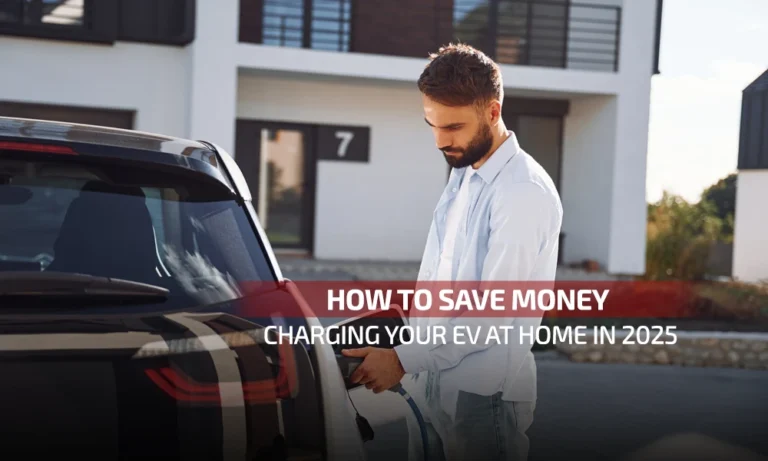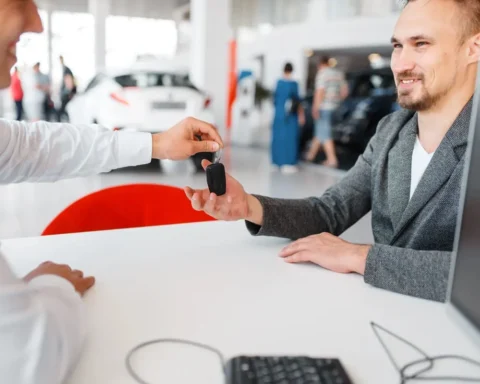Owning an EV in 2025 is exciting—until your utility bill hits £100+ just for electricity.
But here’s the deal: charging at home can be a gold mine of savings—especially in the UK, where grants, tariffs, and smart tech can slash costs dramatically.
This guide cuts through the noise.
We’ll compare top-ranked posts, expose what’s missing, and inject our real-world, no-fluff opinion, with frequent nods to UK EV charging grants explained 2025 along the way.
Go Beyond Off‑Peak: Embrace Dynamic & Smart Charging
You already know off‑peak is great—but dynamic pricing can save you even more.
Tapping into the UK EV charging grants explained 2025 smart charger means charging happens automatically when rates dip—sometimes as low as 5p/kWh, even outside traditional night hours.
It’s this flexibility that powers savings of £700–£1,000/year, not just pennies.
Pavement-Gully Charging: EV Savings for Every Home
Don’t be left out if you live in a terrace or flat.
Thanks to a £25 million government fund, councils are now rolling out curbside cable gullies—so you can charge from the pavement safely and affordably.
That means no driveway? No problem—without relying on expensive public stations.
Future-Proof with Bi‑Directional Charging
Soon your EV won’t just draw power—it’ll give it back.
While widespread infrastructure is still ramping up, bidirectional charging is already proving its value. With V2G or V2H, your car charges when rates plummet, then discharges when rates spike or to power your home.
Early adopters are saving up to £1,000 per year, and as more rollover into the grid, grid-friendly, cheaper charging will follow.
Action Plan
- Apply for the £350 home charger grant under UK EV charging grants explained 2025
- Install a smart, dynamic charger that works with time-of-use tariffs
- Join an EV-special tariff for ~6–7p/kWh off-peak rates
- If no driveway, ask your council about pavement gullies installation
- Add solar/storage to your setup
- Plan ahead for V2G-ready hardware—plug it in when it’s mainstream
Smart Charging + Off‑Peak = 60–70% Savings
Smart chargers are table stakes now.
Combined with EV-specific tariffs, you can see rates drop from ~28 pence to 7 pence per kWh overnight—about 2–3p/mile .
With day/night split and dynamic pricing, some users pay under 5 p/kWh .
Best UK EV Tariffs
Here’s what current tariffs look like:
- Octopus Agile: ~7p off‑peak
- OVO/EO Next Drive: ~6.7p–7p off‑peak
- Utility Warehouse Double Gold: low off‑peak rate + standing charge
Pair these with smart charging and you’re saving £300–£600/year compared to standard rates .
UK EV Charging Grants Explained 2025
This is big for drive‑home owners:
- Residential grant: Up to £350 per charger, covering 75% of installation .
- Landlord & workplace grants: Also 75% up to £350/socket or £30k infrastructure .
- New subsidies: A £63M package covers curbside charging for non‑driveway homes .
So when we say UK EV charging grants explained 2025, we’re including:
- How to qualify (residents, landlords)
- Grant stacking with salary-sacrifice
- Eligibility for pavement gullies in terraced houses
Solar, Storage & Smart Integration
Got panels or a home battery? Sync them with your smart charger and tariff:
- Charge from solar by day
- Top up overnight off‑peak
- Save an extra £200–£400/year .
My tip: Trust your meter logs—solar-to‑car charging is free money.
Salary-Sacrifice Schemes & Workplace Options
Some firm’s schemes allow you to lease both EV and charger under a tax-friendly structure:
- Net savings 20–50% overall .
Add the residential grant on top — serious win.
Real-Life Savings Breakdown
Assume:
- 30 kWh/100 miles EV
- 10k miles/year (~3,000 kWh)
| Scenario | £/kWh | Annual Cost |
| Standard tariff | 28p | £840 |
| EV‑specific off‑peak | 7p | £210 |
| Smart + dynamic + solar | Free–3p | £0–£100 |
Plus:
- £350 grant reduces installer cost.
- £500–£600 saved on electricity.
- Plus TAX benefits if salary-sacrifice.
Yes—but with dynamic pricing, you can max out savings in under-used low-cost windows.
They let you run a charging cable under the pavement for safe, street-side charging without blocking pathways.
If your home setup and schedule align, V2G can slash bills even more. But early V2G systems need load management support and tariff flexibility.
Yes—setup costs for pavement gullies are now supported, even without off-street parking.
Typical 7 kW home chargers (~£1,200 installed) pay back in ~3 years—faster if you use solar, dynamic rates, or benefits from grant boosts.
TLDR (Smart Charging in One Line)
- Get a smart charger installed (apply UK EV charging grants explained 2025)
- Switch to EV-specific/off‑peak tariff
- Schedule smart overnight charging
- Add solar/storage if you can
- Stack workplace schemes or landlord grants







